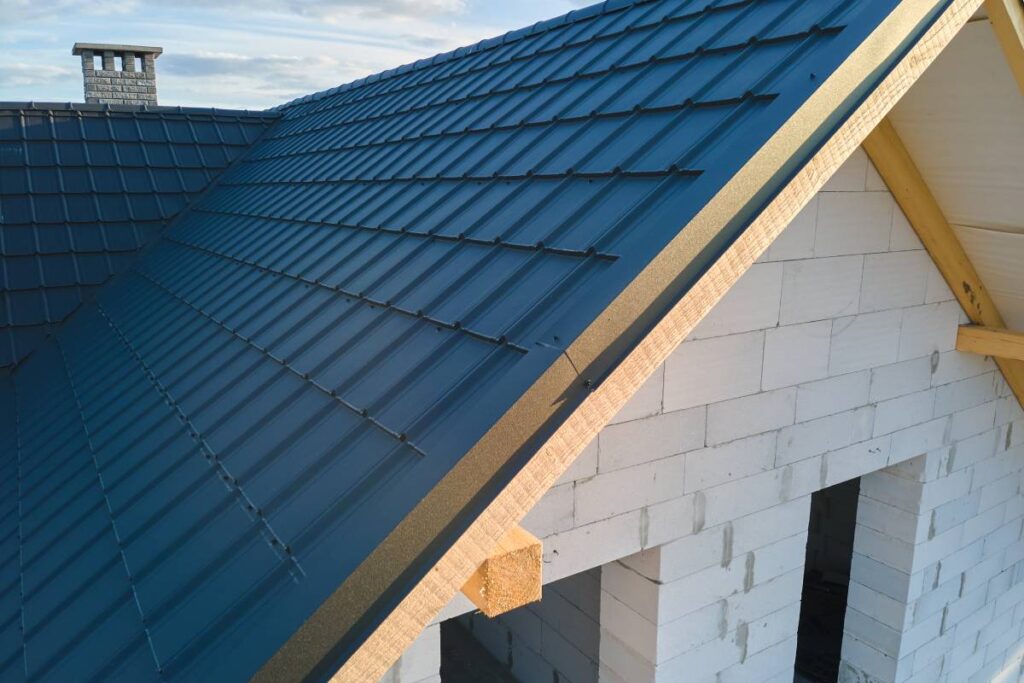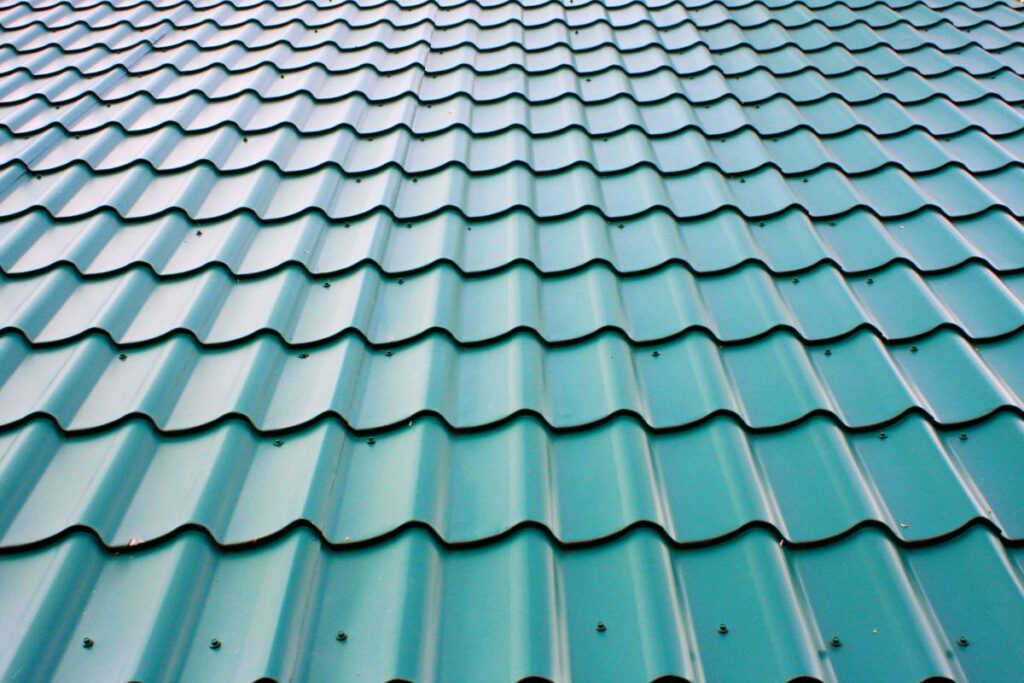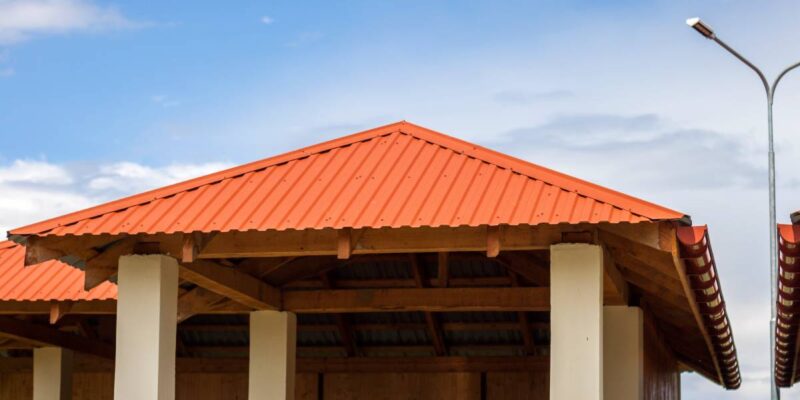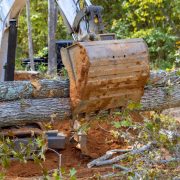A home without a roof is like a story without a cover. Among the various roofing options, metal and shingle roofs, particularly those made of asphalt, are highly favoured by homeowners. Each type has its own set of advantages and disadvantages that can influence your choice when considering a new roof.
This detailed comparison of metal roofs versus shingles examines key factors such as cost, appearance, installation complexity, durability, and eco-friendliness. By the end of this guide, you’ll be equipped to select the best option based on your specific requirements and budget.
Related article:
- A How to Guide for Gutter Repairs
- What floorboards are best? Is it easy to install them? Can you lay floorboards on top of floorboards?
Metal roofs and shingle roofs are two popular options for residential roofing, each with its own set of characteristics and benefits.
- Materials:
- Metal roofs are typically made from steel, aluminium, copper, or zinc. These materials offer durability and longevity.
- Shingle roofs are usually made from asphalt, wood, slate, or composite materials. Asphalt shingles are the most common and affordable option.
- Durability:
- Metal roofs are highly durable and can withstand harsh weather conditions such as strong winds, hail, and heavy snow. They have a longer lifespan compared to shingle roofs, often lasting 50 years or more.
- Shingle roofs are also durable but may require more frequent maintenance and repair, especially in areas prone to high winds or extreme weather.
- Installation:
- Metal roofs are typically more complex to install and may require professional installation. They come in large panels or shingles and need to be properly secured to the roof structure.
- Shingle roofs are easier and quicker to install, making them a more cost-effective option for many homeowners. They come in individual overlapping pieces that are nailed to the roof deck.
- Aesthetics:
- Metal roofs offer a modern and sleek appearance and come in a variety of colours and styles to complement different architectural designs.
- Shingle roofs provide a more traditional look and are available in a wide range of colours, textures, and styles, including architectural and three-tab shingles.
- Cost:
- Metal roofs generally have a higher upfront cost than shingle roofs due to the materials and installation expenses. However, they often provide long-term savings through energy efficiency and reduced maintenance.
- Shingle roofs are more budget-friendly upfront but may incur higher maintenance costs over time, including repairs and replacement.
- Energy Efficiency:
- Metal roofs are reflective and can help reduce cooling costs by reflecting solar heat away from the building. They also often contain recycled materials, making them environmentally friendly.
- Shingle roofs provide some insulation but may not offer the same level of energy efficiency as metal roofs.
Ultimately, the choice between a metal roof and a shingle roof depends on factors such as budget, aesthetic preferences, climate, and long-term maintenance considerations.

The cost of a metal roof vs. shingle
Comparing metal roofs to shingles, the most obvious difference is cost. However, there are several other factors to consider that might make metal roofs a worthwhile investment. Let’s break it down:
Costs: The price difference between metal roofs and shingles depends on the materials chosen. Asphalt shingles are the most affordable but are also the least durable. Metal roofs offer options like steel, tin, aluminium, zinc, and copper, with copper and zinc being more expensive.
AVERAGE METAL ROOF COST
- Average: $13,200
- Lowest: $8,500
- Highest: $68,000
AVERAGE SHINGLES COST
- Average: $8,500
- Lowest: $5,500
- Highest: $12,000
Repairs and Maintenance: Asphalt shingle roofs are easier and cheaper to repair but require more frequent maintenance. Metal roofs tend to remain undisturbed for years, enduring storms and wear-and-tear.
Longevity: Metal roofs have a significantly longer lifespan than shingle roofs, ranging from 40 to over 100 years. Asphalt shingle roofs typically last between 15 to 30 years, while wood and clay tile shingles may reach up to 50 years with high maintenance.
Efficiency: Metal roofs can potentially lower energy costs by better-retaining heat in the winter, with estimates suggesting up to 40% savings. An energy audit can provide insights into the potential efficiency gains with a metal roof.
Aesthetics: Both metal and shingle roofs offer a variety of styles and colours, catering to individual preferences and matching the home’s aesthetics.
Resale Value: Metal roofs generally have a higher resale value compared to asphalt shingles, which is essential to consider for homeowners planning to sell their homes within the next few years.

Shingles vs. metal roof cost factors
Shingles vs. Metal Roof Cost Factors
When comparing metal roofing to shingles, various factors can influence the costs involved:
Material: Regardless of whether you opt for a shingle or metal roof, the material you choose plays a significant role in cost. Here’s a breakdown of material costs:
| Material | Type | Cost per Square | Lifespan (Years) |
|---|---|---|---|
| Steel | Metal | $300 – $1,500 | 40 – 70 |
| Stainless steel | Metal | $600 – $1,600 | 40 – 70 |
| Tin | Metal | $1,000 – $2,100 | 40 – 70 |
| Aluminum | Metal | $800 – $1,600 | 50 – 80 |
| Copper | Metal | $1,800 – $3,800 | 100+ |
| Zinc | Metal | $1,400 – $2,300 | 100+ |
| Asphalt | Shingle | $90 | 15 – 30 |
| Composite | Shingle | $400 | 40 – 50 |
| Wood | Shingle | $350 – $500 | 30 – 50 |
| Clay | Shingle | $300 – $1,000 | 50 – 100 |
Roof Size: The size of your roof directly impacts material requirements and consequently, costs. Larger roofs demand more materials and labour, increasing overall expenses.
Shape, Slope, and Accessibility: Complex roof shapes, steep slopes, and difficult accessibility can elevate costs for both metal and shingle roofs. Metal roofs, in particular, may incur higher expenses due to unique cuts required for installation.
Location: Your geographical location significantly influences costs. High-cost living areas, such as coastal or urban regions, generally entail higher expenses. Conversely, remote locations may incur elevated labour costs due to limited roofing services.
Professional Installation Costs: Regardless of material choice, roofing replacement entails substantial investment. Labour and material costs contribute to the overall expenditure.
Material Costs: Shingle prices range from $1 to $10 per square foot, with asphalt shingles being the most economical and clay shingles the priciest. Metal roof materials vary widely in cost, from $1 to $25 per square foot, with steel being the most affordable and copper the most expensive.
Labour Costs: Shingle roof installation typically incurs lower labour costs compared to metal roofs due to ease of installation. Labour typically constitutes around 60% of total shingle roof expenses. Metal roof installation labour charges range from $2 to $14 per square foot.










